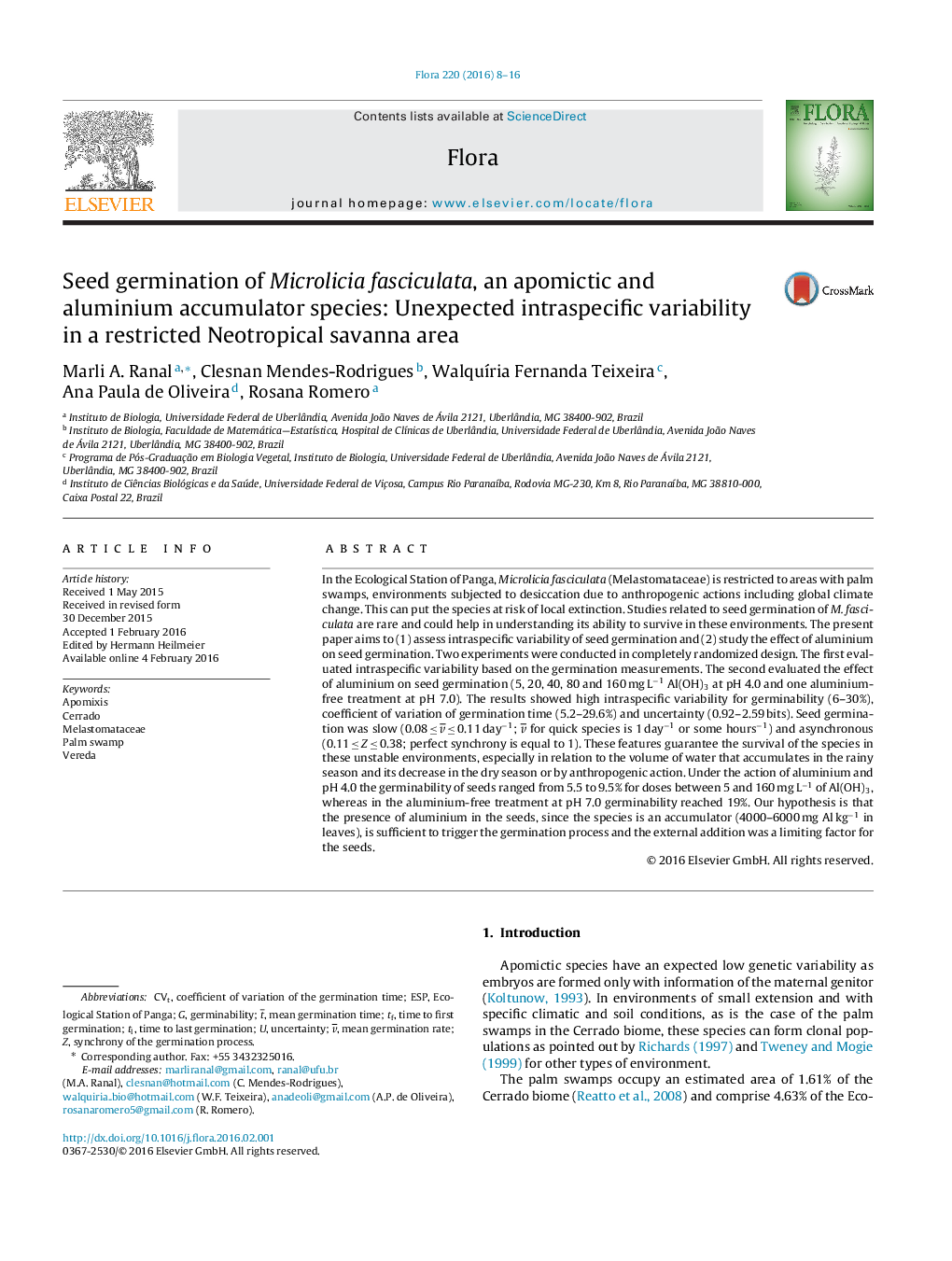| Article ID | Journal | Published Year | Pages | File Type |
|---|---|---|---|---|
| 2179320 | Flora - Morphology, Distribution, Functional Ecology of Plants | 2016 | 9 Pages |
•We provide an example of wide variability in seed germination traits for an aluminium accumulator species.•Variability was detected for germinability, coefficient of variation of germination time and uncertainty.•We provide an example of one calcifugous, Al and Mn accumulator species with high content of iron in the leaves.•We hypothesize that endogenous Al of the seeds could be sufficient to trigger germination in Al-accumulators
In the Ecological Station of Panga, Microlicia fasciculata (Melastomataceae) is restricted to areas with palm swamps, environments subjected to desiccation due to anthropogenic actions including global climate change. This can put the species at risk of local extinction. Studies related to seed germination of M. fasciculata are rare and could help in understanding its ability to survive in these environments. The present paper aims to (1) assess intraspecific variability of seed germination and (2) study the effect of aluminium on seed germination. Two experiments were conducted in completely randomized design. The first evaluated intraspecific variability based on the germination measurements. The second evaluated the effect of aluminium on seed germination (5, 20, 40, 80 and 160 mg L−1 Al(OH)3 at pH 4.0 and one aluminium-free treatment at pH 7.0). The results showed high intraspecific variability for germinability (6–30%), coefficient of variation of germination time (5.2–29.6%) and uncertainty (0.92–2.59 bits). Seed germination was slow (0.08 ≤ v¯ ≤ 0.11 day−1; v¯ for quick species is 1 day−1 or some hours−1) and asynchronous (0.11 ≤ Z ≤ 0.38; perfect synchrony is equal to 1). These features guarantee the survival of the species in these unstable environments, especially in relation to the volume of water that accumulates in the rainy season and its decrease in the dry season or by anthropogenic action. Under the action of aluminium and pH 4.0 the germinability of seeds ranged from 5.5 to 9.5% for doses between 5 and 160 mg L−1 of Al(OH)3, whereas in the aluminium-free treatment at pH 7.0 germinability reached 19%. Our hypothesis is that the presence of aluminium in the seeds, since the species is an accumulator (4000–6000 mg Al kg−1 in leaves), is sufficient to trigger the germination process and the external addition was a limiting factor for the seeds.
